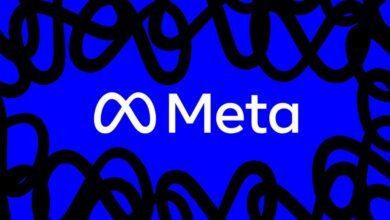Empowering Data Owners With Next-Gen AI Models

▼ Summary
– The Allen Institute for AI (Ai2) developed FlexOlmo, a new large language model that allows control over training data even after the model is built.
– FlexOlmo challenges the current industry norm where AI companies use web data without clear ownership rights, making data extraction post-training nearly impossible.
– The model uses a novel approach where data owners train sub-models independently and merge them, enabling later removal of their data if needed.
– FlexOlmo employs a “mixture of experts” design, allowing asynchronous training and merging of sub-models without coordination between data owners.
– In tests, a 37-billion-parameter FlexOlmo model outperformed individual models and other merging methods by 10% on benchmarks while preserving data control.
A groundbreaking approach to AI model development is shifting power back to data owners, enabling unprecedented control over how information is used in machine learning systems. Researchers have created an innovative framework that allows contributors to maintain authority over their data even after it’s been incorporated into large language models, a stark contrast to current industry practices where control is typically lost during training.
This new system, named FlexOlmo, reimagines the traditional model-building process by decentralizing training. Instead of surrendering raw data to a central repository, participants work with a shared baseline model called the “anchor.” They independently train a secondary model using their proprietary datasets, then merge the results with the anchor before contributing to the final model. This method ensures the original data never leaves the owner’s hands while still enhancing the collective AI system.
One of the most significant advantages is the ability to withdraw contributions later if needed. For example, a publishing house could remove its archive’s influence from the model if legal concerns arise or if the AI’s applications conflict with its policies. “Data owners regain control without requiring costly retraining,” explains Ali Farhadi, CEO of the Allen Institute for AI (Ai2). “It’s a fundamental shift in how we approach AI development.”
Technically, FlexOlmo leverages a “mixture of experts” architecture, where specialized sub-models collaborate to enhance overall performance. The team’s breakthrough lies in refining how independently trained models merge, using a novel numerical representation method. This ensures seamless integration while preserving the option to later disentangle contributions.
In benchmark tests, a 37-billion-parameter FlexOlmo model, roughly a tenth the size of Meta’s largest open-source offering, outperformed standalone models and surpassed competing merging techniques by 10% on standard evaluations. The system’s efficiency also means contributors can exit without disrupting operations, maintaining smooth inference speeds.
By redefining data ownership in AI, FlexOlmo introduces a more ethical and flexible framework for collaborative model training. As Farhadi notes, “This isn’t just an upgrade, it’s a completely new paradigm for building AI responsibly.” The approach could reshape how industries, researchers, and content creators engage with machine learning, balancing innovation with accountability.
(Source: Wired)





